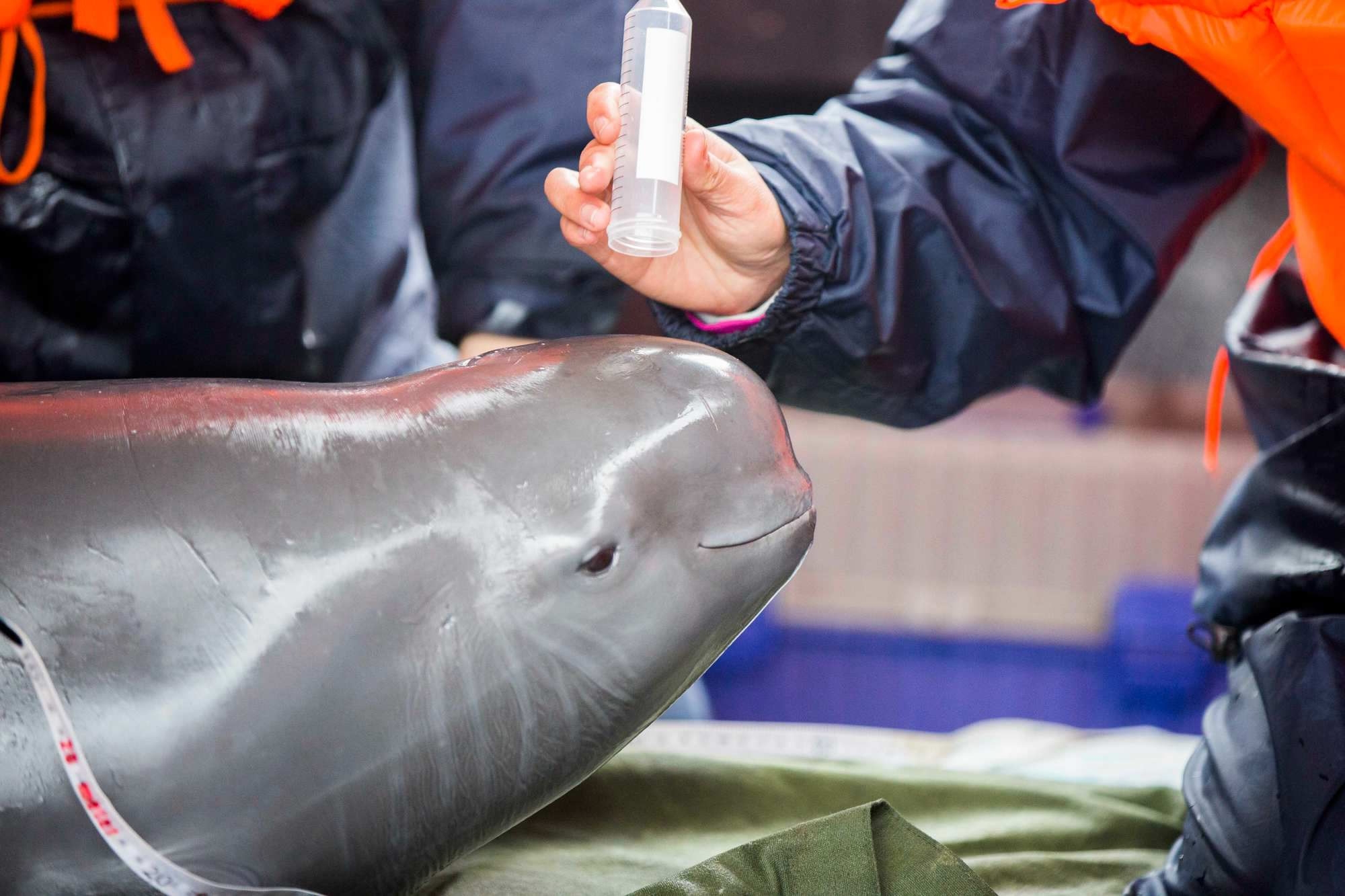
China
18:35, 28-Mar-2017
China to relocate 22 endangered finless porpoises in 2017
Updated
11:10, 28-Jun-2018

China will relocate 22 finless porpoises to a more hospitable environment in 2017 in a project launched by China’s Ministry of Agriculture and the Chinese Academy of Sciences.
"Our plan is to move them to areas free from human activity so they can flourish," said Wang Ding, a porpoise expert.
The finless porpoises, known for their "grins," live in the Yangtze River and the two lakes linked to the busy waterway.

Experts are conducting physical examinations on a finless porpoise in Jiujiang, Jiangxi Province, March 17, 2017. /CFP Photo
Experts are conducting physical examinations on a finless porpoise in Jiujiang, Jiangxi Province, March 17, 2017. /CFP Photo
There are only around 1,000 porpoises left, and their natural habitat is threatened by pollution, overfishing, and river traffic. Scientists predict that without effective protection, the finless porpoise will disappear in five to ten years.
China started its porpoise relocation program in 1992 after concerns were raised that the population of the species had shrunk by an average of 13.7 percent every year.
As of now, China has established three finless porpoise nature reserves in Hubei, Hunan and Anhui provinces.

Preparations are being made to transfer four finless porpoises from Jiujiang, Jiangxi Province to Hewangmiao nature reserve in Hubei Province, March 25, 2017. /CFP Photo
Preparations are being made to transfer four finless porpoises from Jiujiang, Jiangxi Province to Hewangmiao nature reserve in Hubei Province, March 25, 2017. /CFP Photo
"It has been an effective measure. We have recorded three to five births each year. Tian'ezhou reserve in Anhui has already had more than 70 porpoises," Wang said.
The first batch of finless porpoises was transferred to Hewangmiao nature reserve in Hubei Province on Monday. The four finless porpoises, two males and two females, are from Poyang Lake in east China's Jiangxi Province.

SITEMAP
Copyright © 2018 CGTN. Beijing ICP prepared NO.16065310-3
Copyright © 2018 CGTN. Beijing ICP prepared NO.16065310-3